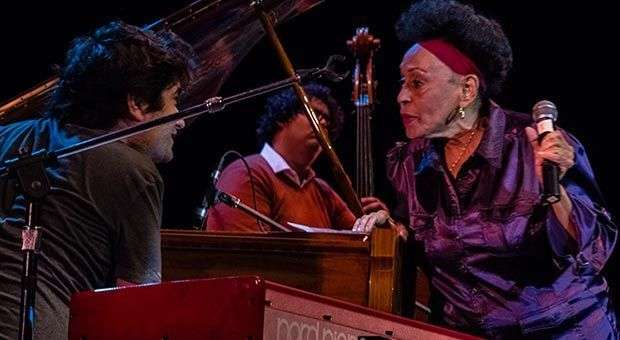The horizons of jazz are increasingly large, constant creativity that gives it body widens daily, but also the countless untold and little known stories to give the halo, in a magical way, which have become a genre followed by millions around the world.
It is a long list of lofty musicians who have made of jazz what it is, and try endlessly to each and every one of them with the seriousness they deserve is a daunting task that will take specialists, researchers and enthusiasts to ink an infinite number of pages.
The International Jazz Festival Plaza, which these days revolutionized everything that happens in music in Havana, devoted its program to the great figures of Cuban jazz, thought quite ambitious because it was a rather large box for just four days.
But apart from the crazy busyness of tributes devised by the organizing committee, it is only fair to highlight the work of scholars, musicians and fans of the genre who have gathered at the symposium that the festival usually organizes, apart from time concerts, whose only merit is the great talent of artists, is the most serious space dedicated to treating the paths of this music in Cuba and the world.
In just one day of lectures, talks and panels have addressed a wide range of topics related to the latest trends and creative and interpretive processes of Cuban jazz, and its relationship to other art forms.
With special emphasis they dealt with the importance of young talent in the burgeoning jazz movement of the island and the importance of their work to maintain constant “movement” that makes jazz made in Cuba so rich.
In the symposium, held in the Center for Research and Development of Cuban Music (CIDMUC), specialists also dealt with the processes of synthesis in piano performance, and the orchestration and creativity in popular music.
The figures of Mario Bauza, Chano Pozo, Cachao, Frank Emilio, Emiliano Salvador and other great jazz players in the scene of the island, were addressed at the meeting because of their greatness as composers and performers, and their essential contributions to the genre.
Another edge of the great Cuban jazz is its arrival in the United States and how they revolutionized the way they played, something recognized on more than one occasion by American legends like trumpeter Dizzy Gillespie.
Contemporary jazz owes much to Cuba, the speakers, including Bobby Carcasses, National Music Award, Radames Giro, specialist and researcher, and American musician Arturo O’Farrill, a regular at the Jazz Plaza, agreed on.
Another highlight of the day was a special presentation of the book A Century of Jazz in Cuba by Leonardo Acosta, and “Jam Session. The new generation”, a selection of writings by Carmen Souto.
Acosta’s text, published by Music Museum Editions collects the first story about this demonstration was ever written in Cuba, meanwhile Jam Session … by CIDMUC Editions, compiled a series of works of young Pedro Sureda and Reinier Aldazabal, which address issues related to cultural policies.
Those attending the conference were able to access titles in the collection The young spirit of jazz, of the Colibri seal, this time the album Claro oscuro, by pianist Alejandro Falcon, Dreaming, by violinist Willian Roblejo and El trombón de Santa Amalia, by trombonist Juan Carlos Marín.
The Jazz Plaza this year went by without making too much noise, but it is fair to say that the concert program was a great one because it had in its roster the very best performers in the country and foreign groups of top quality, even when they were not well-known in Cuba.
Much of the public agrees that a pending task is the tribute to Bebo Valdés, who died earlier this year, and masked in a dedication, although deserved, did not give the fair space to this great Cuban pianist and composer.










